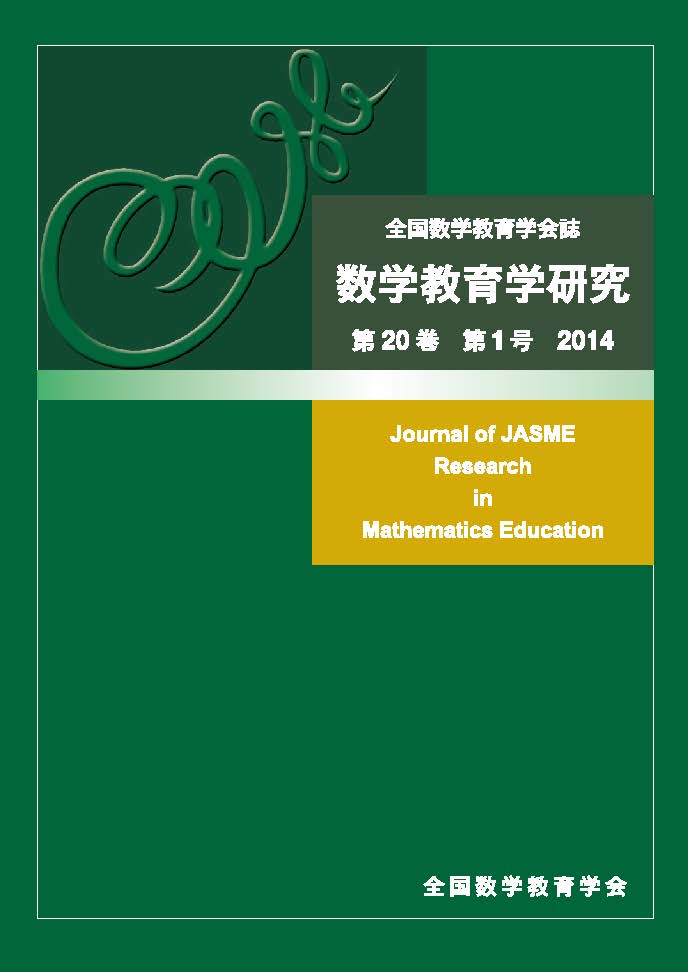Volume 20, Issue 1
Journal of JASME Research in Mathematics Education
Displaying 1-13 of 13 articles from this issue
- |<
- <
- 1
- >
- >|
-
Article type: Article
2014Volume 20Issue 1 Pages 1-9
Published: February 01, 2014
Released on J-STAGE: January 17, 2019
Download PDF (2175K) -
Article type: Article
2014Volume 20Issue 1 Pages 11-25
Published: February 01, 2014
Released on J-STAGE: January 17, 2019
Download PDF (1333K) -
Article type: Article
2014Volume 20Issue 1 Pages 27-36
Published: February 01, 2014
Released on J-STAGE: January 17, 2019
Download PDF (347K) -
Article type: Article
2014Volume 20Issue 1 Pages 37-44
Published: February 01, 2014
Released on J-STAGE: January 17, 2019
Download PDF (617K) -
Article type: Article
2014Volume 20Issue 1 Pages 45-57
Published: February 01, 2014
Released on J-STAGE: January 17, 2019
Download PDF (1380K) -
Article type: Article
2014Volume 20Issue 1 Pages 59-71
Published: February 01, 2014
Released on J-STAGE: January 17, 2019
Download PDF (909K) -
Article type: Article
2014Volume 20Issue 1 Pages 73-90
Published: February 01, 2014
Released on J-STAGE: January 17, 2019
Download PDF (1483K) -
Article type: Article
2014Volume 20Issue 1 Pages 91-98
Published: February 01, 2014
Released on J-STAGE: January 17, 2019
Download PDF (392K) -
Article type: Article
2014Volume 20Issue 1 Pages 99-112
Published: February 01, 2014
Released on J-STAGE: January 17, 2019
Download PDF (945K) -
Article type: Article
2014Volume 20Issue 1 Pages 113-124
Published: February 01, 2014
Released on J-STAGE: January 17, 2019
Download PDF (376K) -
Article type: Article
2014Volume 20Issue 1 Pages 125-132
Published: February 01, 2014
Released on J-STAGE: January 17, 2019
Download PDF (409K) -
Article type: Article
2014Volume 20Issue 1 Pages 133-141
Published: February 01, 2014
Released on J-STAGE: January 17, 2019
Download PDF (421K) -
Article type: Article
2014Volume 20Issue 1 Pages 143-153
Published: February 01, 2014
Released on J-STAGE: January 17, 2019
Download PDF (418K)
- |<
- <
- 1
- >
- >|
